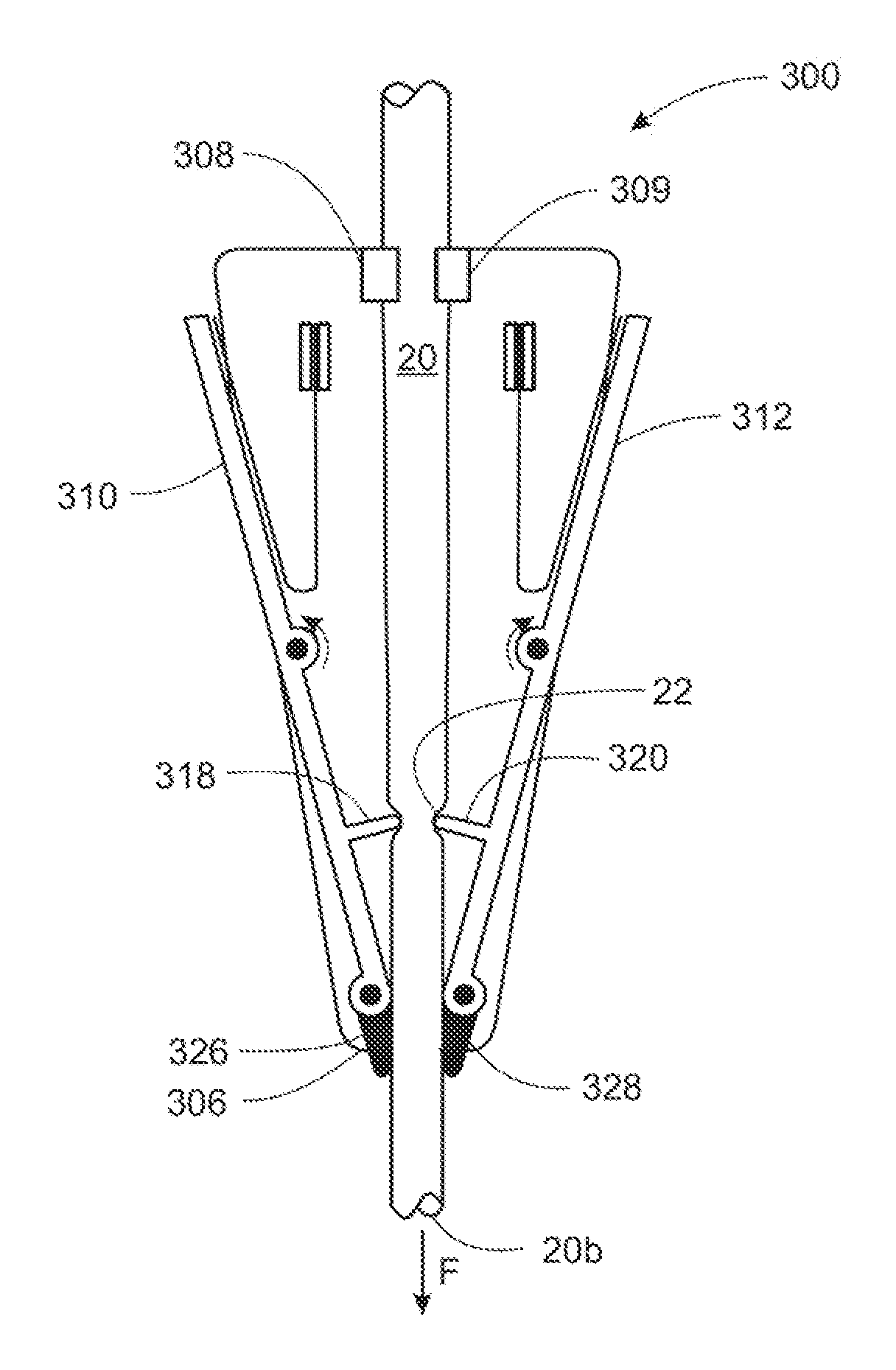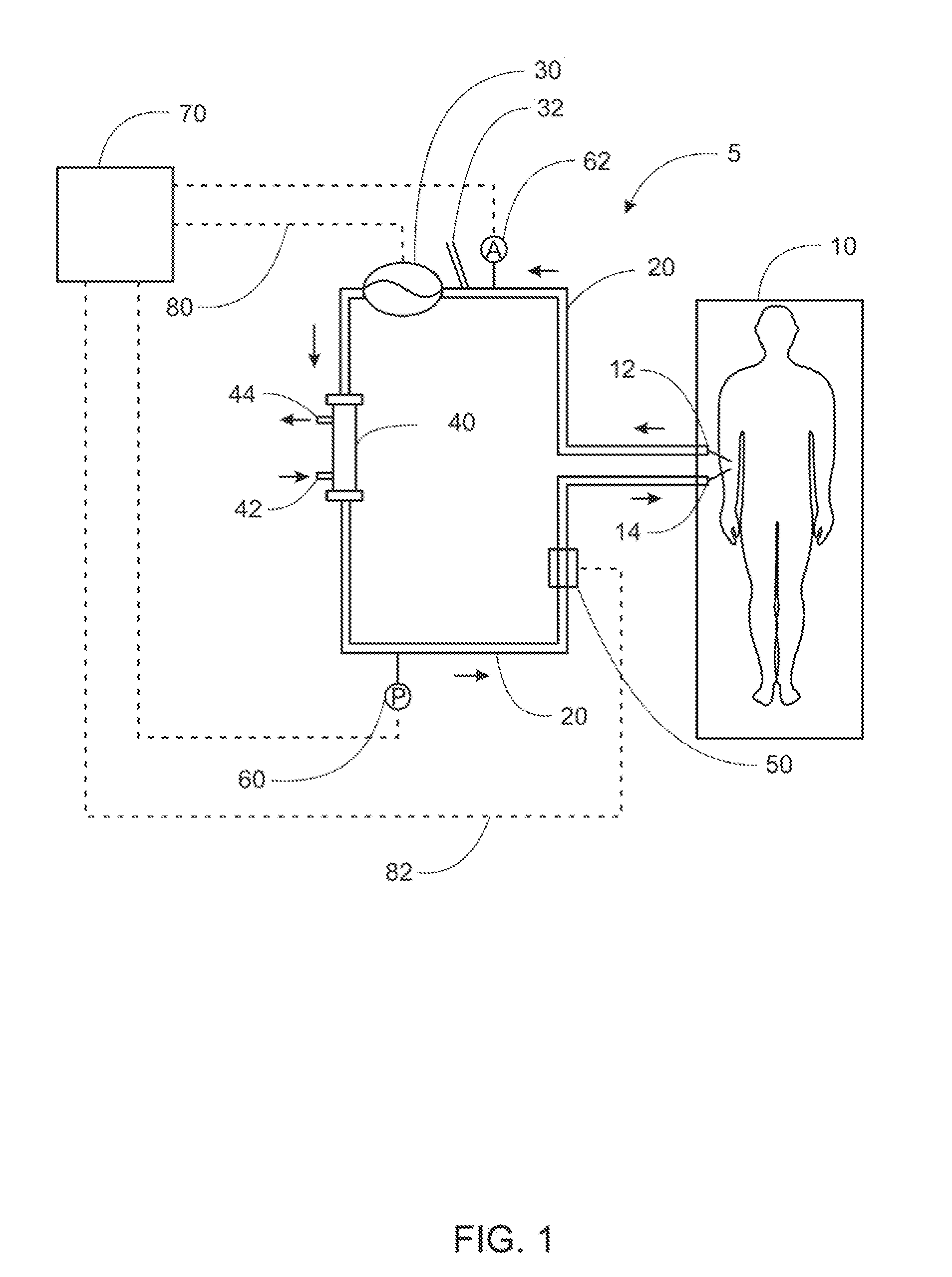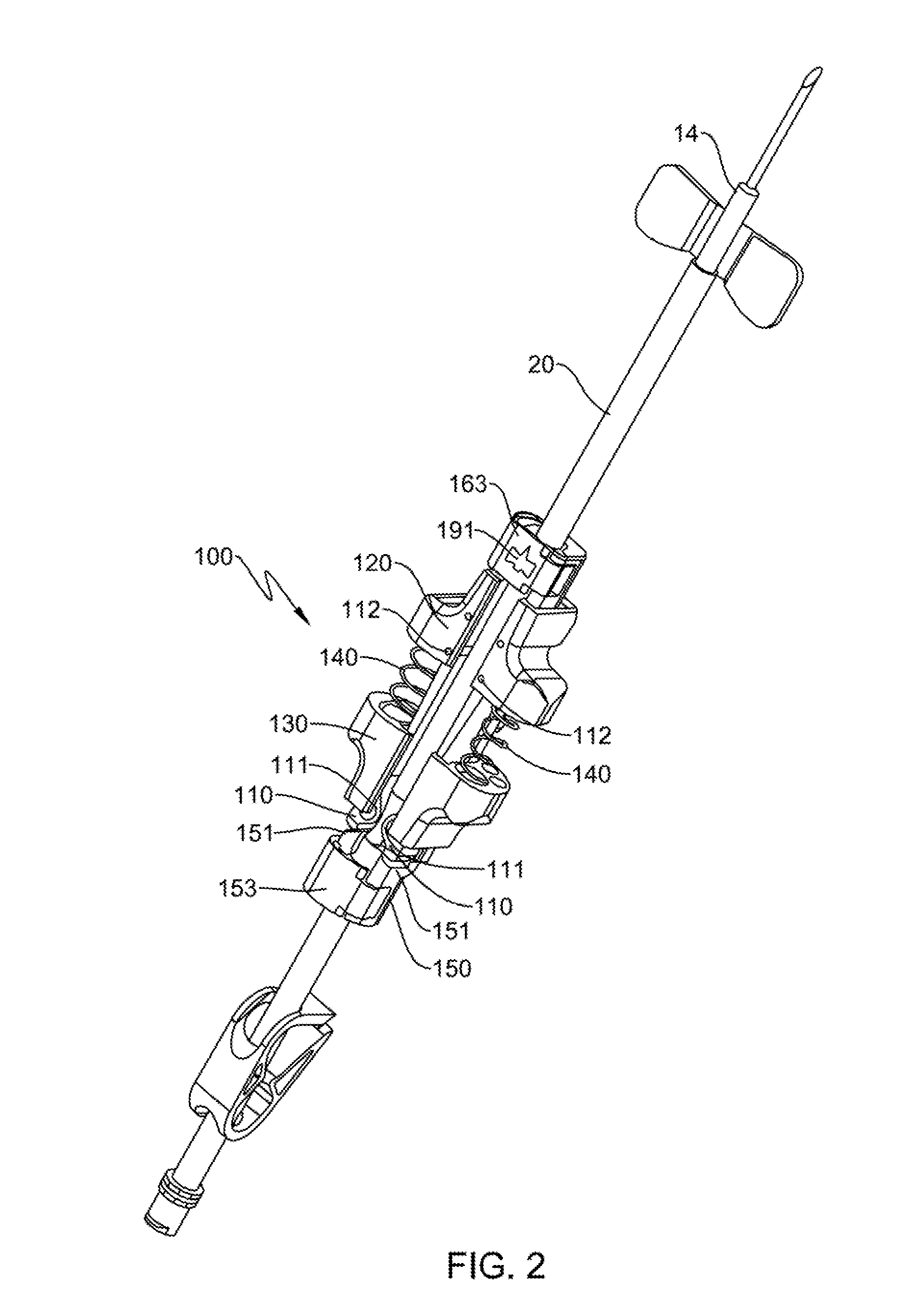Devices and Methods For Occluding a Flexible Tube
- Summary
- Abstract
- Description
- Claims
- Application Information
AI Technical Summary
Benefits of technology
Problems solved by technology
Method used
Image
Examples
embodiment 300
[0167]As shown in FIG. 21, the embodiment 300 is shown in an occluded position. When a predetermined threshold force F acts on the second end 20b, the slack 21 in tube 20 is removed and the tube generally moves towards the second peripheral edge 306. Since triggering arms 326 and 328 engage the tube, a longitudinal movement of tube 20 acts to rotate arms 326 and 328. The rotation of the triggering arms leads to the rotation of the support arms 310 and 312; and under the force of springs 324 and 326, occluding members 318 and 320 apply an occlusive force against the sides of tube 20.
[0168]As shown in FIG. 22, another embodiment 400 of a device for occluding a flexible tube generally comprises two bodies 402 and 404 pivotally connected by a central hinge 410. A first clip 406 is mounted to body 402 and second clip 408 is mounted to body 404 to hold the tube 20 in a first position 21 between the clips. Strain relief is provided when the tube 20 is in the first position 21 in order for ...
embodiment 500
[0169]As shown in FIG. 25, another embodiment 500 of a device for occluding a flexible tube generally comprises a hollow cylindrical body 502 having a first circular edge 504 and a second circular edge 505 located at opposite ends of the body. Semicircular arms 506 and 508 are connected to and extend away from the second peripheral edge 505. An elastic actuating member 520 is located at the distal ends of the arms 506 and 508 and is capable of deflecting the distal ends of the arms toward each other. Actuating member 520 may alternatively be any element that exerts a spring-like force to compress the distal ends of arms 506 and 508 toward each other, such as, for example, a metallic spring clip. The arms 506 and 508 are capable of bending towards each other resulting in the occlusion of the tube 20 and then returning to their original position. A first occluding member 510 and a second occluding member 512 are attached to the first arm 506 and the second arm 508 respectively. The oc...
embodiment 1200
[0186]As shown in FIGS. 45 and 46, another embodiment 1200 of a device for occluding a flexible tube generally comprises a first body 1202 having a generally planar surface; a second body 1206 pivotably attached to the first body 1202; a plunger 1220 slideably attached to the first body 1202; and compression spring 1230 positioned between the plunger and the first body. A first channel 1204 having two curved sidewalls for positioning a tube 20 therebetween is located at one end of the first body 1202, while a curved member 1210 is attached to the opposite end of the first body 1202. Additionally, a plunger 1220 is slideably mounted on the first body 1202 where the compression spring 1230 provides the force necessary to move the plunger 1220 into the first channel 1204 and occlude the tube located therein.
[0187]As shown in FIGS. 45 and 46, in a first position, the spring 1230 is compressed against the curved member 1210 and the plunger 1220. It is restrained by a tab 1224 extending f...
PUM
 Login to View More
Login to View More Abstract
Description
Claims
Application Information
 Login to View More
Login to View More - R&D
- Intellectual Property
- Life Sciences
- Materials
- Tech Scout
- Unparalleled Data Quality
- Higher Quality Content
- 60% Fewer Hallucinations
Browse by: Latest US Patents, China's latest patents, Technical Efficacy Thesaurus, Application Domain, Technology Topic, Popular Technical Reports.
© 2025 PatSnap. All rights reserved.Legal|Privacy policy|Modern Slavery Act Transparency Statement|Sitemap|About US| Contact US: help@patsnap.com



